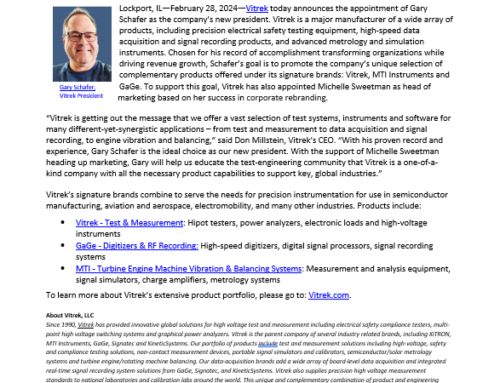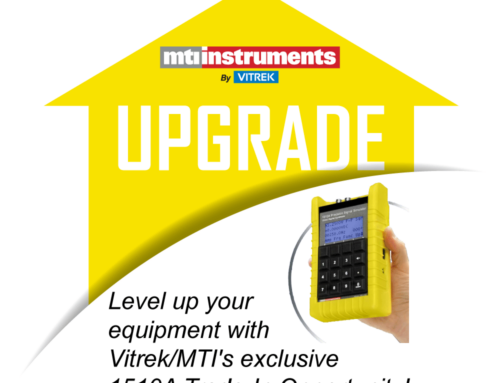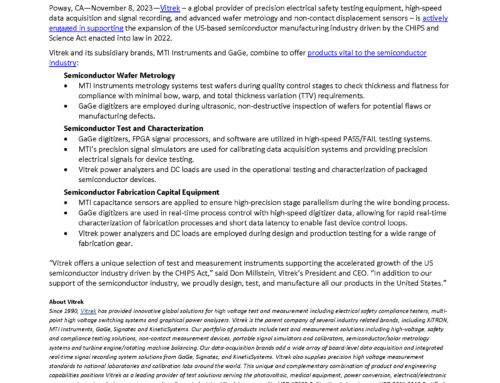Capacitance sensing can be used to make non-contact thickness measurements for most insulating materials. Capacitance sensors are known for their ability to precisely measure the thickness and position of conductive targets, but what’s less known is that these sensors can also measure the thickness of non-conductive materials. Examples include glass, sapphire, and plastics, as well as semi-insulating semiconductor materials such as GaAs and silicon nitride.
Analog vs. Digital Technologies
MTI Instruments, a global supplier of precision measurement technologies, takes the guesswork out of what used to be a complex measurement for non-conductive materials. MTI’s Digital Accumeasure system features a digital amplifier that converts a capacitive electric field measurement (displacement) directly into a 24-bit digital reading to accurately measure thickness. Moreover, this direct conversion approach eliminates the errors that are associated with traditional analog amplifiers.
Older analog probes and amplifiers could make the necessary voltage measurements for non-conductive materials, but converting these voltage signals to a calibrated thickness is tedious and error prone. MTI’s Digital Accumeasure simplifies the measurement and ensures the most accurate results.
Dielectric Thickness Measurements
As MTI’s How-to Guide explains, placing a dielectric (non-conducing) material between a capacitance probe and grounded target creates a three capacitor equivalent circuit. The greater the dielectric constant of the target, the lower the impedance of the gap appears to the probe. Users can measure the thickness of the non-conductive material by placing it between a probe and a ground plate that is grounded back to the capacitance amplifier.
Dielectric thickness measurements work best with materials that have good control over their dielectric content. As long as the dielectric constant of the material doesn’t change, the calibration will remain consistent. Even non-conductive sheets, webs and other moving non-conductive targets can be measured for process control. For best results, the ground target area should be circular and the same diameter as the probe.


